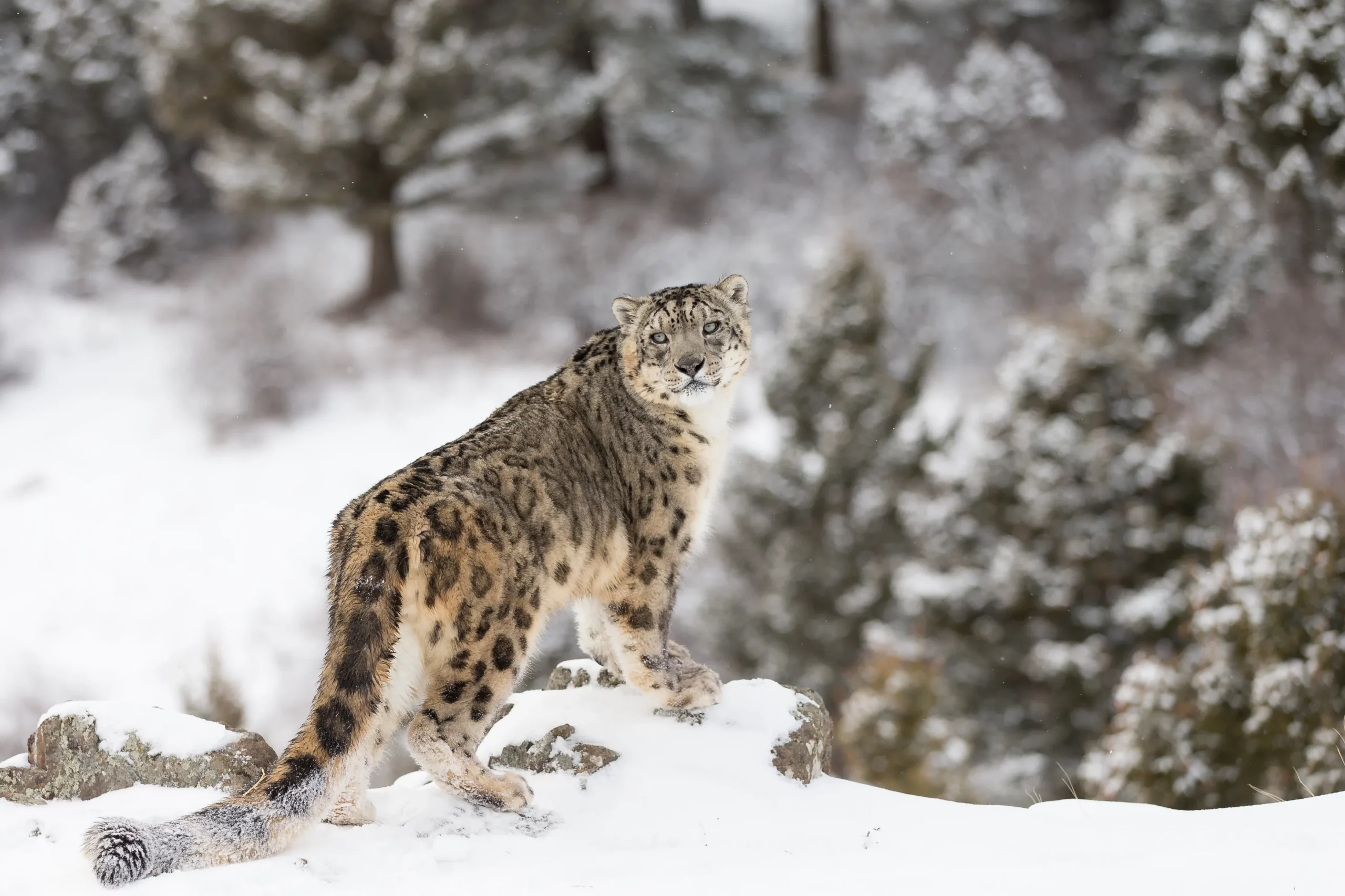New snow leopard census reveals 397 in Nepal, underscoring conservation success
The data, released by WWF Nepal, offers critical insights into the current status and distribution of snow leopards across the country's high-mountain habitats.

KATHMANDU: A new census has revealed that Nepal is home to 397 snow leopards, a rare and elusive big cat species globally considered to be in a vulnerable state.
The data, released by WWF Nepal, offers critical insights into the current status and distribution of snow leopards across the country’s high-mountain habitats.
According to the International Union for Conservation of Nature (IUCN), Nepal hosts 10 percent of the world’s snow leopard population, despite accounting for only 2 percent of its global habitat.
In Nepal, these majestic cats are found across approximately 30,500 square kilometers in high-altitude regions.
The Snow Leopard Trust, based in the United States, estimates the global snow leopard population to be between 3,020 and 5,390, spread over 2 million square kilometers across 12 countries.
These include Nepal, China, Afghanistan, Bhutan, Kazakhstan, Kyrgyzstan, India, Mongolia, Russia, Pakistan, Tajikistan, and Uzbekistan.
Alongside Nepal, countries like India, Mongolia, and Bhutan have recently adopted advanced technology and research methodologies to update their snow leopard population data.
According to WWF Nepal’s Mountain Program Manager, Sarin Shrestha, the latest figures show China with 2,000 to 2,500 individuals, Mongolia with 953, India with 718, Nepal with 397, and Bhutan with 134 snow leopards.
This population assessment was led by the Department of National Parks and Wildlife Conservation and the Department of Forests and Soil Conservation, under the Ministry of Forests and Environment, in collaboration with various conservation organizations.
The data was compiled using research and evaluations carried out between 2015 and 2024.
Snow leopard expert Shashank Paudel explained that the study utilized modern techniques including camera traps and genetic analysis of scat samples, collected across seven study areas to assess the species’ distribution and population density.
This landmark assessment is a testament to Nepal’s ongoing commitment to protecting its sensitive mountain ecosystems and the endangered species that inhabit them.
The study was conducted by a technical team led by senior ecologists from the Department of National Parks, under the global “Population Assessment of the World’s Snow Leopards” (PAWS) framework of the Global Snow Leopard and Ecosystem Protection Program (GSLEP).
The project included participation from individual researchers and conservation organizations.
Rising Threats to Habitat
Snow leopards, found only in 12 countries, are considered indicators of a pristine Himalayan ecosystem. However, nearly 60 percent of their habitat lies outside protected areas, making it increasingly fragmented and vulnerable to human encroachment.
Conservation efforts face multiple challenges including retaliatory killings due to human-wildlife conflict, poisoning, poaching, rugged terrain, lack of suitable technology, manpower, and funding. Snow leopards typically reside at elevations between 540 and 5,000 meters above sea level and are listed as “Vulnerable” on the IUCN Red List.
They are known for their long, bushy tails which help them maintain balance in steep terrain. In Nepal, snow leopards are more populous in western regions compared to the east, with Dolpa district alone home to 90 individuals.
WWF Nepal Country Representative Dr. Ghana Shyam Gurung hailed the new data as a historic milestone in Nepal’s conservation journey. He stated that this clear population picture would guide future conservation strategies, help prioritize long-term protection measures, and foster participatory conservation efforts.
6-Year National Snow Leopard Conservation Action Plan
In a significant policy move, the Ministry of Forests has launched the National Snow Leopard Conservation Action Plan (2024–2030), prioritizing habitat protection and species preservation.
The plan outlines strategic objectives, including habitat and corridor restoration, mitigating human-wildlife conflict through community engagement, stronger law enforcement against poaching, and bolstering cross-border and international collaboration.
An estimated Rs 1.77 billion (approx. USD 13.5 million) will be spent over six years to implement the plan.
About 35 percent of the budget is allocated to conflict mitigation through community involvement, while 26 percent will target wildlife crime management.
The plan emphasizes local community participation, leadership, and capacity building across all strategies.
Despite being one of the least-studied big cat species, snow leopards are gradually receiving more scientific attention.
A 2021 WWF report noted that only 23 percent of the global snow leopard range had been systematically studied by that time, with empirical population data available for less than 3 percent.
This latest assessment not only sheds light on Nepal’s snow leopard population but also serves as a vital foundation for the future of high-altitude biodiversity conservation in the region.










